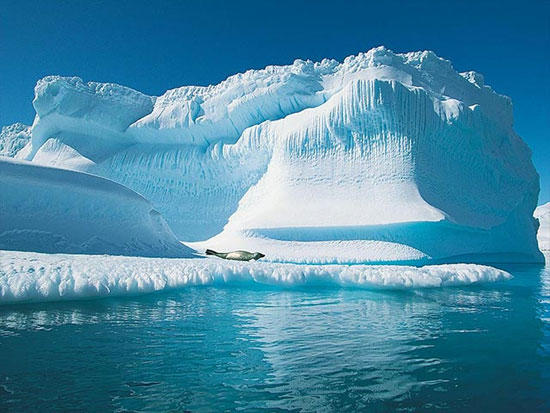Changes at the two poles of the Earth affect the climate
On April 29, at the "Arctic Science Week" held in the Korean capital of Korea, the World Meteorological Organization (WMO) and the International Science Council (ICSU) announced the results of the study. Rescue 'Challenges from Earth's poles,' the largest coordinated research project attracts more than 50,000 scientists in more than 60 countries around the world in the past two years.

Arctic (Artwork).
WMO and ICSU emphasize research results as an invaluable source of knowledge about the poles of the Earth, global oceans, biodiversity to predict changes in ecosystems as well as climate change in those The next decade will also provide reliable scientific evidence of the impact of climate change in North and Antarctica in the context of the fastest-changing global environment in human history.
Ice and snow on the two poles of the Earth have dramatically reduced human, animal and plant life as well as the circulation cycles of the atmosphere and oceans. Many areas in North and Antarctica have warmed twice as fast as the global average.
WMO scientists note that research has established an important link between the poles of the Earth and the global oceans. These unprecedented large-scale interactions have made the Arctic warmer and many areas, including the densely populated areas of the middle latitudes of the Earth, become colder.
The study provides new data on the role of tectonic plates in the corridors of Earth poles for atmospheric circulation, as well as new insights into microbiological and liberal processes. Greenhouse gases from the soil floor have long been covered with ice.
The new discovery of Earth's microorganisms has provided fundamental insights into polar habitats as well as the evolution of this microbial system in changing climate conditions.
- The two poles of the earth have the same species of creatures
- The chaotic magnetic field of the ancient Earth
- The cause of ice on Earth melted fast
- Earth is about to return to the ice age?
- The impact of climate change on bacteria
- Tropical cyclones tend to shift toward the two poles
- What if tomorrow woke up, all the ice on Earth would have melted?
- Found this in the Arctic, the scientists are extremely worried
- Video: Earth has 3 north poles
- Fluctuations in ocean currents can affect the Earth's climate
- Climate change increases the risk of cancer
- Unbelievable facts about the Earth
 Is the magnetic North Pole shift dangerous to humanity?
Is the magnetic North Pole shift dangerous to humanity? Washington legalizes the recycling of human bodies into fertilizer
Washington legalizes the recycling of human bodies into fertilizer Lightning stone - the mysterious guest
Lightning stone - the mysterious guest Stunned by the mysterious sunset, strange appearance
Stunned by the mysterious sunset, strange appearance